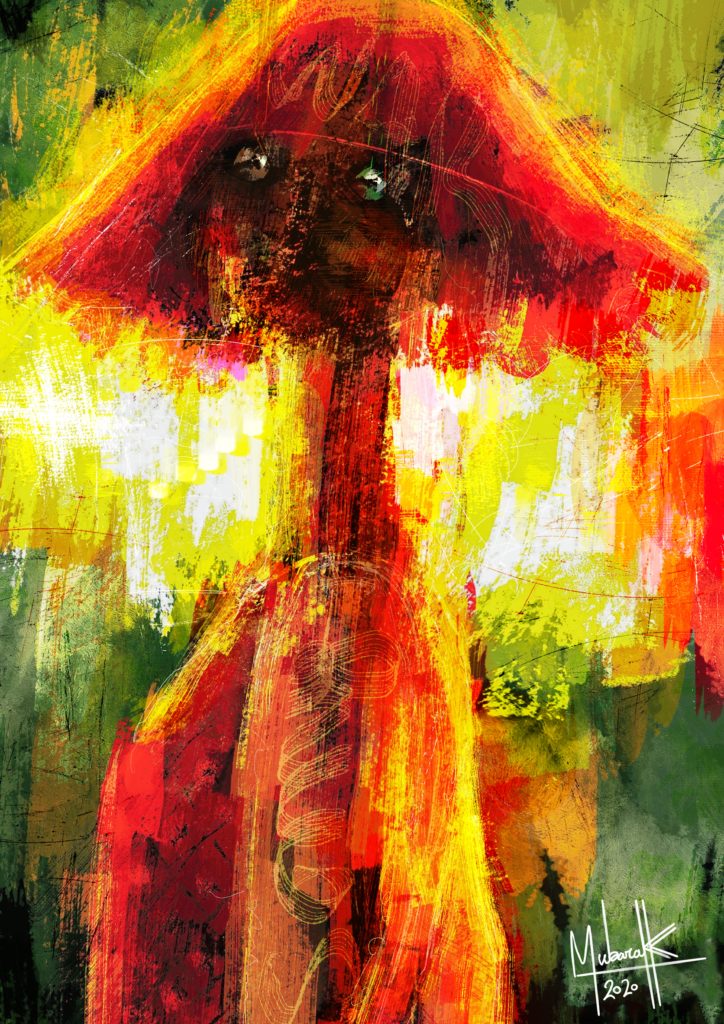
When I was five years old, I would join my mother when she shopped at department stores when we traveled. As she browsed the racks of clothes, I would run between them playing imaginary hide-and-seek with the women who worked there. They were all so put-together, so elegantly dressed in miniskirts, matching blazers, and shiny name tags. They wore high-heels that would instantly alert others of their location as they roamed the store / strutted around the store. They shooed and chased me as I gleefully squirmed and swerved between the fabrics, happily wreaking havoc. I had no issue crawling on all fours to hide from them; they didn’t stand a chance. Somewhere in the midst of my play and their growing frustration, I realized that these racks of clothing were only meant to be touched by very special bodies. And mine wasn’t one of them.
As I played, I imagined what it would be like to have such a body; one that was worthy of such well-protected garments. I imagined comfortably flaunting my legs in miniskirts, wearing heels that announced my presence — loudly, obnoxiously, shamelessly. I imagined being that comfortable taking up space. That’s what I thought it meant to be a woman, and I couldn’t wait.
When my body started to develop into what was supposed to be a “woman’s body”, I was sorely disappointed. The reflection that looked back at me in the mirror couldn’t be further from the image I had as a child, watching those women from the sanctity of my hiding spot. I thought it was just a waiting game. Surely, if I was patient, if I waited long enough, I would be rewarded with the looks that were fitting of a “good girl” who would surely emerge as a “good woman.” Surely, my sharp angles would develop curves, my legs would elongate themselves, and my hips would have that natural sway. These things would all happen, I would reflect the image I had, and once I did, that’s how I would know I had arrived. That’s how I would know I was finally “Woman”.
Just wait, I would tell myself.
I spent the majority of my twenties waiting.
I experimented with my appearance a little. I would wear light makeup and high heels, but these were all “necessary” adjustments made to assimilate more than anything else. The makeup hid my occasional blemishes and constant sleep deprivation; the heels gave an air of adulthood and professionalism that I so craved. And yet, with every perceived “alteration” I made to my body and how it presented itself, I grew more ashamed of it. I was torn between two forces. On one end, there was my desire to accept my body, to love it as it was, “imperfections” and all. And on the other, there was my deep-seated frustration that my physical form wasn’t the body that I was expecting, it wasn’t the body that I felt I was promised.
I was a fragmented person. Hiding myself and refusing to “fake” anything all at once. I felt my body was a public humiliation, and I wore my body like one wore a stained favorite dress: unable to fix it, unwilling to get rid of it.
It wasn’t until I was in my 30s that I stopped waiting.
I had a moment when looking through my old photos, where I saw somebody who looked better than I remembered. She looked happy, healthy, and not like she was trapped in a body that betrayed and disappointed her.
My retrospective experience of myself, through those images, was somehow healthier and more loving than my experience of myself at that moment, as I lived it. And somewhere, in that thought I realized: this is it. This is my body. And “Woman” or not, I don’t want to look back at my photos in my 30s and feel this way. I want to look back and know that I knew my body. That I appreciated her. That I connected with and understood her, saw her for who she was, how she carried me every day, and felt good about her.
I wanted her to know that I loved her.
When I look in the mirror today, I see much:
I see a powerful body and unruly hair.
I see a form that has never bent for any rules.
I see lines. I see white hairs.
I see scars and crow’s feet. Smile lines and wear-and-tear.
And I see the stories that put them there.
The stories that shaped and formed her,
The ones that made my house a home.
I wear these stories on my face.
I carry them in my body.
I harbor them in my soul.
They are earned. They are glorious.
They are magnificent.
And they are mine.
